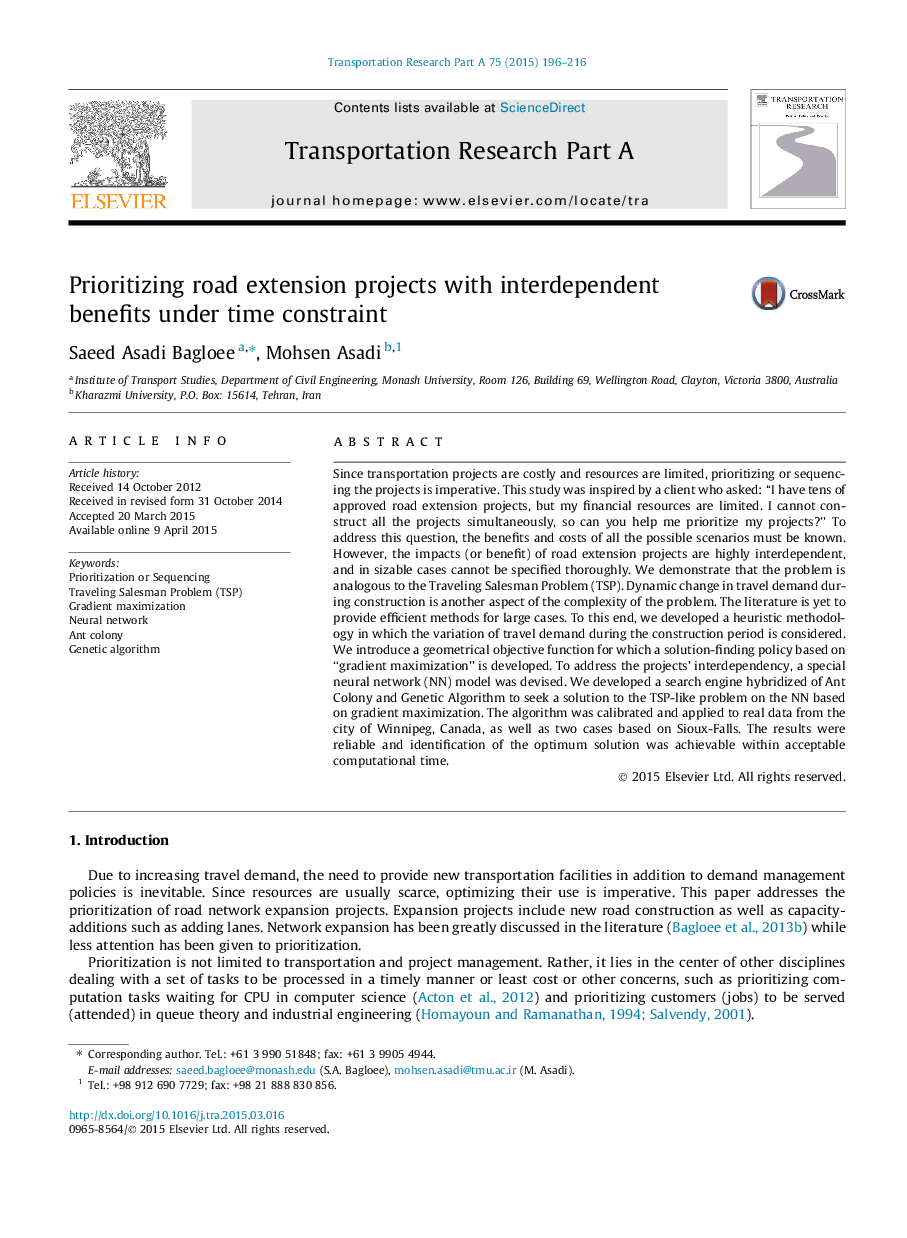| Article ID | Journal | Published Year | Pages | File Type |
|---|---|---|---|---|
| 310443 | Transportation Research Part A: Policy and Practice | 2015 | 21 Pages |
Highlight•The problem is of Traveling Salesman Problems which is highly intractable.•We derived a tractable objective function on geometrical properties of the problem.•We proposed a solution-finding policy based on “gradient maximization”.•A Neural Network was devised to address benefit interdependency of projects.•Solution algorithm is based on Genetic Algorithm hybridized with Ant Colony.
Since transportation projects are costly and resources are limited, prioritizing or sequencing the projects is imperative. This study was inspired by a client who asked: “I have tens of approved road extension projects, but my financial resources are limited. I cannot construct all the projects simultaneously, so can you help me prioritize my projects?” To address this question, the benefits and costs of all the possible scenarios must be known. However, the impacts (or benefit) of road extension projects are highly interdependent, and in sizable cases cannot be specified thoroughly. We demonstrate that the problem is analogous to the Traveling Salesman Problem (TSP). Dynamic change in travel demand during construction is another aspect of the complexity of the problem. The literature is yet to provide efficient methods for large cases. To this end, we developed a heuristic methodology in which the variation of travel demand during the construction period is considered. We introduce a geometrical objective function for which a solution-finding policy based on “gradient maximization” is developed. To address the projects’ interdependency, a special neural network (NN) model was devised. We developed a search engine hybridized of Ant Colony and Genetic Algorithm to seek a solution to the TSP-like problem on the NN based on gradient maximization. The algorithm was calibrated and applied to real data from the city of Winnipeg, Canada, as well as two cases based on Sioux-Falls. The results were reliable and identification of the optimum solution was achievable within acceptable computational time.
